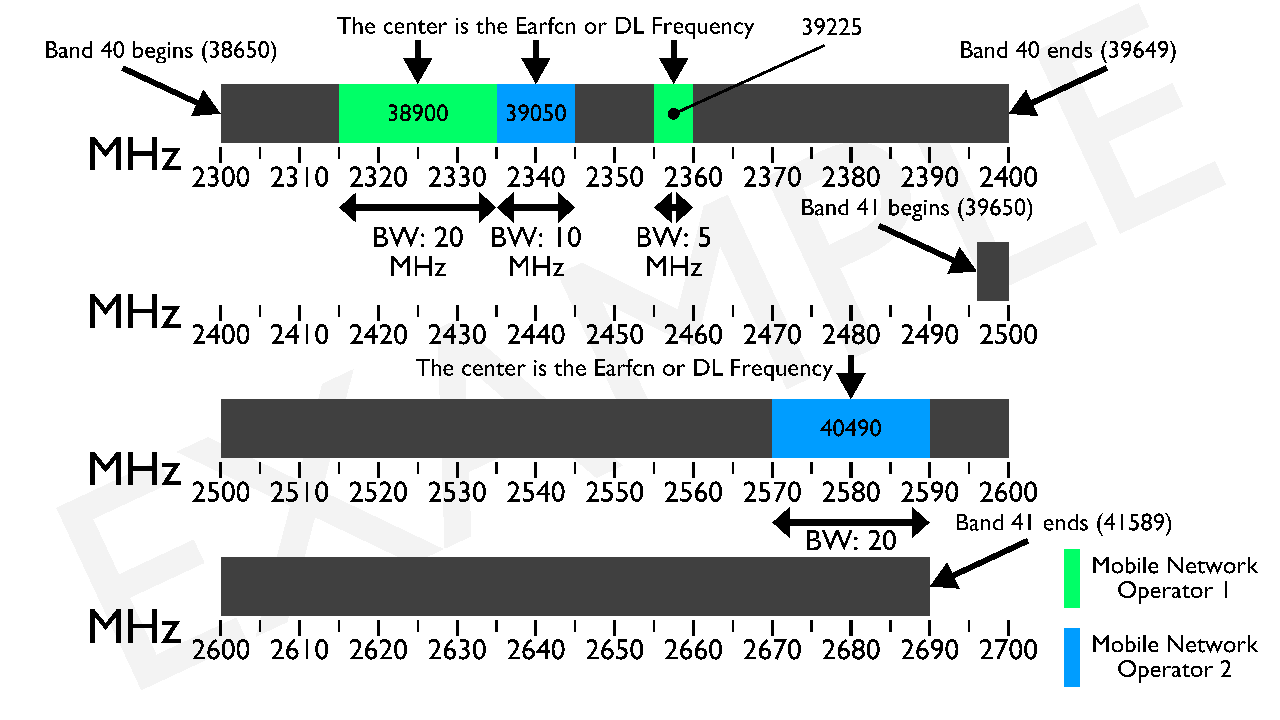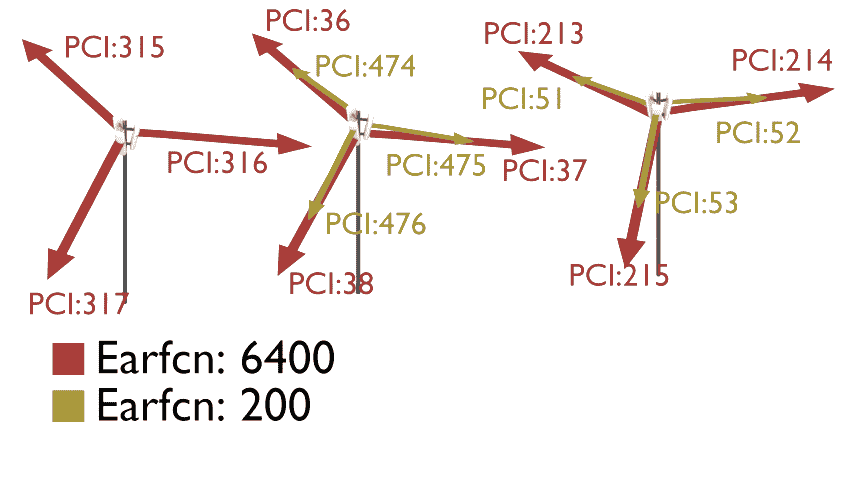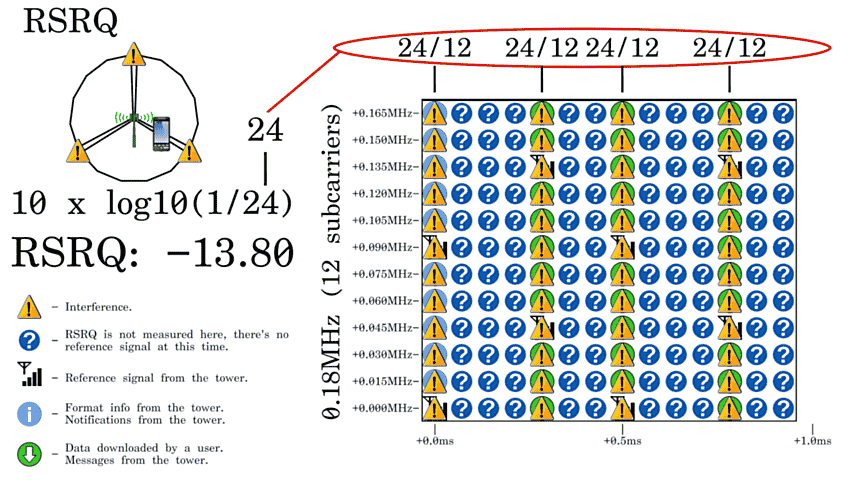EMM
The current state of all that's related to 'logging in' to 4G. Logging in is called Registration. If ESM (near the APN) fails, EMM (near the towers) fails too.
TAC
Each cell (coverage from a part of a cell tower) has a Tracking Area Code broadcasted in it. Phones that select a cell read the TAC from the broadcast. The TAC in the broadcast is displayed here.
When the phone logs in successfully, the TAC of the cell the phone selected is assigned to it.
Eventually, the phone is disconnected due to inactivity (usually takes a few seconds of inactivity.)
The phone's cellular functionality is then mostly sleeping but wakes at least every paging_cycle.
If the phone leaves the TAC, the phone shall notify the carrier so that the carrier knows where to find it. Periodic tracking area updates (e.g. every 54 mins) still occur even if the phone does not leave the TAC.
If the carrier has something to send, whenever the phone is known to be awake, all cells that broadcast the TAC tell the phone to initiate a connection to whichever cell it's currently on. Once connected, the phone can receive whatever (call/text/data) the carrier is sending to it.
Note that a phone may be assigned to multiple TACs, so if a phone is somewhere between two TACs, updates aren't necessary while the phone switches back and forth.
For example, all towers in a smaller town may have the same TAC. It's not extremely common that a town is exited, so there aren't too many tracking area updates.
A good TAC planner is essential. If the tracking area is too small, phones make tracking area updates too often. If the tracking area is too large, it's then often that too many towers try to get one phone to connect.
GUTI
The GUTI is composed of a MCC (identifies the country), MNC (identifies the mobile network operator i.e. carrier in the country), MME Group and MME Code (identifies the carrier's equipment that does logging in, transferring SMS, etc), and a TMSI (temporary ID assigned to the phone.)
ATT#
Attach attempt counter.
TAU#
Tracking Area Update attempt counter.
TAU Cause#
Tracking Area Update Cause.
LTE RRC
Between the phone and the tower.
LTE RRC:IDLE
Disconnected due to inactivity.
LTE RRC:WFRC
Connecting...
LTE RRC:CONN
Connected.
LTE RRC:RELE
Released.
Band
A band in LTE, in a nutshell, is like 2.4GHz or 5GHz in Wi-Fi.
Each band number is a preset that defines:
A frequency range
Just like 2.4GHz Wi-Fi and 5GHz Wi-Fi differing in frequency ranges, each 4G band has its own frequency range too. There are channels inside these frequency ranges.
Valid bandwidths
LTE can be 1.4MHz, 3MHz, 5MHz, 10MHz, 15MHz, or 20MHz wide. 20MHz is like that of 20MHz of Wi-Fi. However, for example, 20MHz is not allowed in certain band numbers.
FDD, TDD, SDL, SUL
A band number may be FDD, TDD, SDL, or SUL.
FDD means that if the bandwidth is 20MHz, then instead of 20MHz, it's a pair of 20MHz, like a total of 40MHz but the BW displayed will be 20MHz. Towers speak on one 20MHz, phones speak on the other 20MHz. So, there is 20MHz for downloading + 20MHz for uploading.
download_frequency + offset = upload_frequency. The offset depends on the band number.
download_frequency + offset = upload_frequency. The offset depends on the band number.
TDD means that phones take turns with the tower. The ratio of uploading to downloading is configurable by the tower, normally, there are more download turns. If the bandwidth is 20MHz then it is indeed 20MHz. It is not 20MHz + 20MHz, else that would be FDD.
SDL means that it's only used for downloading, not uploading. Because there's no way cellular would work without uploading, SDL bands are only supplemental. Phones can use multiple bands at the same time, the primary band is FDD or TDD and a secondary band may be SDL. If a SDL band is in use, it shall only be displayed at the CA part of this software.
Band:UNKNOWN
Either an initial state or it appears because the software is not able to display Band 66 or Band 71 correctly.
BW
A 2.4GHz Wi-Fi network can, basically, be 20MHz or 40MHz wide. A 5GHz Wi-Fi network can, basically, be 20MHz, 40MHz, 80MHz, or 160MHz wide. LTE can be 1.4MHz, 3MHz, 5MHz, 10MHz, 15MHz, or 20MHz wide.
BW: 20MHz may be, for example, 2110–2130MHz for downloading and 1920–1940MHz for uploading.
BW: 10MHz, with the same DL & UL Frequency, may be, for example, 2115–2125MHz for downloading and 1925–1935MHz for uploading.
BW: 10MHz, on a TDD band, may be, for example, 2501–2511MHz for both downloading and uploading, turns are taken.
The BW cannot simply be increased. The BW used depends on the license granted to the carrier. Other frequencies may be for other carriers or non-cellular services.
Earfcn

Like channel numbers in Wi-Fi, each channel number identifies a frequency.
Generally, carriers (mobile network operators) cannot freely choose any channel, channels that can be chosen depend on the licenses they have.
The band number can also be derived from the Earfcn.
PCI
Each part of a tower has a different PCI so that phones can switch quickly.
PCIs only go up to 503, so it is possible that 2 cells have the same PCI.
If 2 cells with the same PCI are close in proximity, the network is misconfigured, unless each cell has a different Earfcn.

Carriers may assign a different PCI to each cell.

Carriers may have the same PCI on other frequencies on the same side of the tower.
This is up to the carrier's/vendor's preference.
There is more to it than that with PCI planning.
RSRP
It is similar to the loudness of music. If too far away from the speaker, music can't be heard clearly. If the volume is raised, or by moving closer to the speaker, music becomes clearer. Past a certain point, there are diminishing returns: raising the volume further or going closer to the speaker does not make the music clearer, it simply makes it louder.
Towers continuously transmit reference signals, even if completely not in use. Each LTE cell (coverage from a part-of-a-tower) has reference signal transmitted inside it along a known sequence. Each cell tower may have multiple cells, each cell is distinguished by its sequence. During measurement, reference signals are collected, the strength of those that match the sequence are averaged in a certain way.
- If the RSRP decreased -10, then the signal strength is now 10x weaker.
- If the RSRP decreased -6, then the signal strength is now 4x weaker.
- If the RSRP decreased -3, then the signal strength is now 2x weaker.
- If the RSRP increased +3, then the signal strength is now 2x stronger.
- ...
There are multiple antennas in a phone. This RSRP is closer to the reading of the antenna that gets the most RSRP.
Note that past a certain point, there are diminishing returns. Performance does not improve much past the -90s. Battery efficiency may improve.
Simply, RSRP is the signal strength. The following can affect it:
ReferenceSignalPower - a setting available at the tower. The transmission power used for data downloaded by users and other parts of LTE may differ depending on the pa and pb.
Distance between the phone and the tower. More free space path loss occurs with farther distances. Also, free space path loss varies depending on the frequency.
Obstructions. The size of the signal between the tower and the phone is called its Fresnel zone. The signal is weakened by obstructions in its Fresnel zone.
Priority. 5GHz Wi-Fi is preferred by many for several reasons, even if the signal strength would be better with 2.4GHz Wi-Fi. After a phone initially selects something, what causes phones to switch frequencies is the settings loaded from the tower. If the signal of the high priority frequency is too weak, the low priority frequency is generally used instead.
Pattern. Sector antennas, the ones most commonly installed on cell towers, are most effective where the sector antenna is aimed at. The carrier may also lenghten the path the signal takes so it pushes itself down.
RSRQ
RSRQ measures the extra signal in the air, relative to the RSRP.
The following lowers the RSRQ (lower means towards negative, i.e. away from 0.)
- Utilization i.e. Load.
- Interference.
- A low signal strength, RSRQ then measures the snow/static.
Example 1: Unused

No one's using the cell, so nothing is transmitted except for the reference signals. Actually, format info and broadcast messages will be transmitted, though only a few resources are spent on those.
Interference/a low signal strength aren't problems in this example. In each 0.18MHz, 2 reference signals are transmitted at the same time. RSRP is of the average reference signal. There are 2 so there's twice the average, twice is 3dB, RSRQ is lowered towards negative so the RSRQ is -3.
10 * log10(1/2) = -3
Log without the ability to specify a base may mean natural log or log10. What's to be used, is log base 10, i.e. log10. If whatever it is you're using only has the natural log, you can convert it to log10.
Example 2: Fully in use

Users are downloading content.
The cellular network doesn't send downloaded content alone, it also sends notifications.
One type of notification tells phones that there is data to decode. How many resources are spent on this type depends on the BW, current number of users in the cell, and the PDCCH aggregation level of the users.
Another type of notification notifies either that an upload is successful or that an upload failed & retransmission is required.
3/4 of the time that can be spent on measuring is where the content users download is at. The phone measuring the RSRQ can download, or other phones (in the same Earfcn) can download, the RSRQ is lowered either way.
Example 3: Fully in use + interfering cell fully in use

The phone has been moved, it is now exactly between 2 cells. There are 12 subcarriers (12 0.015MHzes) in each 0.18MHz. Because all 12 subcarriers are occupied in both the serving cell and the neighbor cell, 12*2=24.
Each normal cell tower has 3 120-degree cells per frequency, if between 2 cells, the tower interferes with itself. Phones can only use 1 cell per frequency, the other cell causes interference.
Scaling

LTE cannot work with 0.18MHz, it's not enough. For example, BW: 20MHz can be displayed, which normally means that 18MHz is used in FDD. That's 100 x 0.18.
Each 0.18MHz is then still measured individually, measurements may be averaged.
Warning! How RSRQ works may differ...
- Depending on the number of antennas. Here, one antenna is taken into account, while LTE normally uses 2 or 4 antennas, unless it's an indoor cell 'tower'.
- Depending on the pa&pb. These are two network settings that can, for example, make user data resource elements stronger or weaker than reference signal resource elements. The pa may, also, change dynamically.
SNR
It is the signal quality, which differs from the signal strength. Refer to SINR (similar.)
RREReqCause
The reestablishment request cause.
RREReqCause : --
Normal.
RREReqCause : RECFG_FAIL
Reconfiguration failed.
RREReqCause : HO_FAIL
Handover failed. The meaning of handover is that the tower or part of tower to be used by the phone was changed during LTE RRC:CONN, such as by leaving the effective coverage area of a tower and entering the effective coverage area of another tower.
RREReqCause : OTHER_FAIL
Others.
PCC MIMO Configured
The number of antennas that may act independently (on both sides) for downloading. 0 may also be displayed.
Tx Pwr
Transmit power.
paging_cycle
While in the LTE RRC:IDLE state, the phone wakes up at least every paging_cycle milliseconds, while it's awake, it looks for a notification that asks it to connect to whichever part of the tower the phone's currently measuring. If there is a notification, the phone connects to the part-of-the-tower it is reading notifications at. The notification is sent by all towers the phone could possibly be covered by.
CA
Refer to CA. However, note the following differences:
Earfcn
In this variant, it is called Earfcn. It is called DL in the other variant. Earfcn and DL are equivalent.
SNR
Its range is 00.0–25.0. Unfortunately, the SCell SNR might be erroneous.
